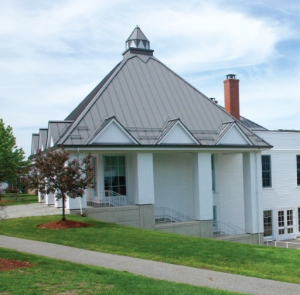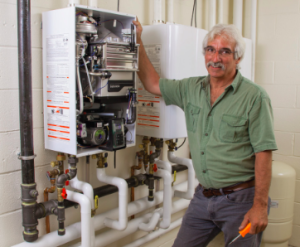
“In 2012, Brooks was looking to make its entrance into energy-efficiency projects. This was an area that had previously been taken on only when a piece of equipment was no longer working,” Palm says. “As it happened two separate departments [Dining and Facilities] were dealing with issues that were inextricably linked; the Dining Services Director was having repair concerns with the dishwasher, and the Director of Facilities was concerned about an aging hot water heating system in the basement of the building that provided the kitchen and the dishwasher with hot water.”
The project seemed ripe to consider as the school’s representatives weighed high repair costs, older systems that were soon due for replacement, and an opportunity to use less hot water. “After receiving proposals for replacing both the dishwasher and the hot water heating system, the Operations Team at Brooks began to look at the business case for taking on this project,” Palm adds. “We projected that these upgrades would provide more than $23,000 in savings on an annual basis. We calculated that the project would have a payback of 2.3 years.”
That assessment moved the school to replace two 400,000 BTU boilers and a 300-gallon storage tank with three Navien NPE-240A tankless water heaters.
According to Palm: “A year later, the AP Environmental Science class took on the challenge of quantifying the year-one savings. As they found, the opportunity to calculate this ROI provided the chance to combine their understanding of water and energy use in a real-world application. The project demonstrated the value of this type of investment.”

Bob Avila, owner of Avila Plumbing, says he has “installed hundreds of Navien’s NPE units around the Boston area.” He is a fan of the dual stainless-steel heat exchangers that resist corrosion better than copper to provide a longer life for his customers. Additionally, he has found that the time and money saving of PVC venting is a feature from which his customers definitely benefit, both in upfront cost and over time. “The school’s previous boiler stainless-steel venting system had pit holes in it and had rotted over time,” Avila says.
For the Brooks School, the redundancy of the three step-fired Navien NPE units over one replacement boiler and hot water tank was an important and obvious choice, especially since the school had a history of “blowing through” hot water tanks on a regular basis.


